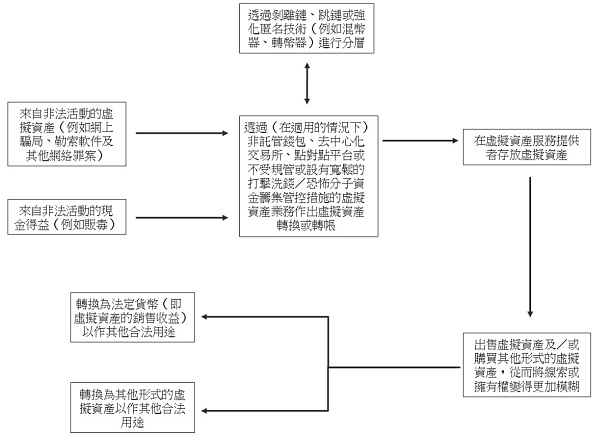Low-power Wearable Tech Gets the Green Light to Tap into 6 GHz Frequency Band
US Gives Green Light to Metaverse Technology, Allows Use of Faster 6GHz FrequencyUS approves Metaverse tech for 6GHz frequency use
Oh, behold, tech enthusiasts and digital asset investors! The United States communications regulator has granted a rule change that has the potential to shake up the digital world as we know it. Brace yourselves for the mind-boggling possibilities that lie ahead!
In a press release issued on October 19th, the Federal Communications Commission (FCC) announced that it will allow low-power wearable technology, including virtual and augmented reality devices crucial to the metaverse, to tap into the coveted 6 GHz frequency band. And guess what? These devices won’t even need a license! It’s like a permission slip to the party of the century!
So, what’s the big deal, you ask? Well, imagine faster speeds, more bandwidth, and lower lag, or “latency” if you want to sound fancy. This means your experiences in the digital realm will be as smooth as a buttered unicorn sliding down a rainbow! The FCC claims that this band is a vital component for next-generation Wi-Fi operations. It’s like upgrading from a rusty tricycle to a shiny rocket-powered hoverboard!
But wait, there’s more! The FCC confidently asserts that this rule change will create an ecosystem of cutting-edge applications, including wearable technologies and augmented and virtual reality. We’re talking about the stuff of sci-fi dreams here, people! It’s like unleashing a technological tidal wave that will sweep us into a brave new world where the boundaries between the physical and digital realms blur into oblivion!
- Victory for Ripple as SEC Drops Charges Against Top Executives
- Grayscale ETF Showdown Federal Court Set to Deliver Final Verdict as SEC’s Loss is Sealed
- Oops! Crypto Firms Caught in Billion-Dollar Fraud, Attorney General Takes Action
Unsurprisingly, tech giants like Meta, Apple, and Google have been eagerly waiting for this moment. They’ve been feverishly perfecting their AR and VR wearables, each vying to revolutionize the way we interact with technology. Meta dropped its Quest 3 in early October, while Apple’s Vision Pro is expected to hit the shelves in early 2024. It’s a race to see who can create the snazziest device, like a battle between wizards conjuring the most enchanting spells!
And it doesn’t stop there, my friends. Meta also unleashed a second version of its Rayban-partnered AR glasses in September, causing quite a stir. Rumor has it that Apple and Google are also cooking up their own AR-enabled glasses. It’s like a magical face-off between the titans of tech, each trying to outdo the other with their mind-bending creations!
Do you want to know the best part? These three tech behemoths actually petitioned the FCC way back in 2020 to open up this frequency spectrum for low-power devices like their wearables. They saw the extraordinary potential hidden within those waves, like discovering a treasure chest full of mystical artifacts!
Of course, you’re probably wondering what exactly this 6 GHz band can be used for. Well, according to the wizards at Bloomberg, it can connect your AR/VR devices to your smartphone or even share navigation data with your vehicle. It’s like forging invisible bridges that seamlessly connect the digital and physical worlds!
But hold your horses, folks! The FCC, being the responsible gatekeeper of all things wireless, doesn’t want chaos to reign. They’ve put in place some careful limits and requirements to prevent any interference with licensed services operating in the same band. So, while we’re unleashing the power of these devices, we’re also ensuring a harmonious symphony of communication.
So, dear investors and tech enthusiasts, the future is beckoning, and it’s brimming with infinite possibilities. The 6 GHz frequency band is our ticket to a world where reality merges with imagination, where the metaverse becomes our playground. Get ready to witness the dawn of a new era, where low-power wearables reign supreme, and the digital universe becomes our oyster!
Now, grab your digital wands and let’s navigate this exciting journey together. Share your thoughts and dreams in the comments below! Let the technological revolution begin! ✨🚀🌟
We will continue to update Blocking; if you have any questions or suggestions, please contact us!
Was this article helpful?
93 out of 132 found this helpful
Related articles
- Crypto Mixers in the Crosshairs US Treasury Targets Money-Laundering Paradises
- Clearview AI’s Surprise Victory UK Court Overturns GDPR Challenge on Surveillance and Facial Recognition
- No Way Jose FTX’s Former General Counsel Firmly Denies Approving Loans of Customer Funds
- Standoff in the Crypto Corner Advocacy Groups Give Sen. Warren a Reality Check on Terrorism Claims
- NYAG Files Lawsuit Against Crypto Companies for Billion-Dollar Fraud
- Elon Musk and Mark Cuban Join Forces to Challenge SEC Trial Strategies A Power Duo Against the Statutory Titans!
- Sui token refuses to sink, despite dismissing allegations as baseless






